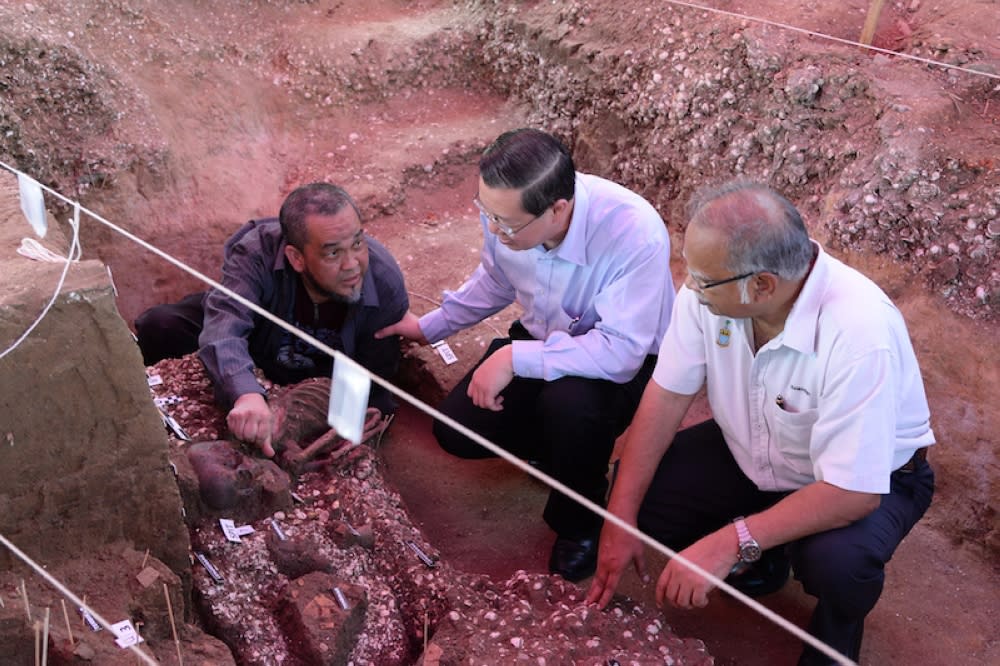Penang to seek Dutch authorities’ aid in carbon dating Guar Kepah skeletons in Netherlands

GEORGE TOWN, March 23 — The Penang state government will request assistance from the Dutch authorities to carbon-date ancient artefacts from the state, including skeletons, that were being kept in the Netherlands.
Deputy Chief Minister II P. Ramasamy, who led a delegation from Penang to the Netherlands, said the bones could be between 3,000 and 4,000 years old but this would only be confirmed through carbon dating.
Carbon dating is the technique used to determine the age of a specimen by measuring how much of the radiocarbon isotope it contained.
“We have identified four boxes of bones and artefacts from Guar Kepah,” he said when contacted via WhatsApp.
He said the artefacts, including the bones, will be repatriated to Penang after the new Guar Kepah Archaeological Gallery is completed.
It was previously reported by DutchNews.nl that the artefacts were stored at the National Natuurhistorisch Museum in Leiden after British archaeologists exhumed the skeletons from Guar Kepah in Penang sometime between 1851 and 1934.
The Penang state government had reached out to the Dutch authorities to seek the return of the skeletons and other artefacts that were removed from Guar Kepah.
Ramasamy led a delegation of eight including tourism and creative economy exco Yeoh Soon Hin, the head archaeologist of the Guar Kepah project, Prof Datuk Mokhtar Saidin and Chief Minister Incorporated general manager S. Bharathi on a working visit to the Natural Biodiversity Center in Leiden on March 20.
According to Ramasamy’s Facebook page, the Penang delegation met with officials from the Netherlands at Hoftoren, The Hague today.
“During the meeting, the collection boxes of skeletons of Guar Kepah were opened and examined by the delegation of Penang,” he wrote on page.
The delegation from Netherlands consisted of the state secretary of education, culture and media Gunay Uslu; senior policy officer from the ministry of education, culture and science Robert Verhoogt; and head archaeology of the cultural heritage agency of the ministry of education, culture and science Jos Bazelmans.
Ramasamy said the delegation from Penang will complete its working visit and return on March 27.
A total 41 skeletons from three shell middens — A, B and C — in Guar Kepah were excavated by British archaeologists between 1851 and 1934.
The skeleton of a woman, dubbed the “Penang Woman”, was found during excavation works at Guar Kepah in Kepala Batas back in 2017.
The skeleton was the first and only remaining Neolithic skeleton found in a shell midden in Malaysia.
Shell middens refer to mounds of kitchen debris consisting mostly of shells and other food remnants. It is indicative of ancient human settlement and was sometimes used as burial sites.
The “Penang Woman” was discovered in shell midden C almost fully intact, although her legs were partially destroyed by the backhoe performing the excavation.
During the discovery, her arms were folded and she was surrounded by pottery, stone tools and different types of shells, an indication of her somewhat important position in society then.
The existing Guar Kepah Archaeological Gallery displayed a replica of the “Penang Woman” while the original skeleton is being preserved at the Universiti Sains Malaysia’s (USM) Centre for Global Archaeological Research (CGAR).
The state government is now constructing a new Guar Kepah Archaeological Gallery at the site to display the Penang Woman and the other skeletons that will be brought back from Leiden.


